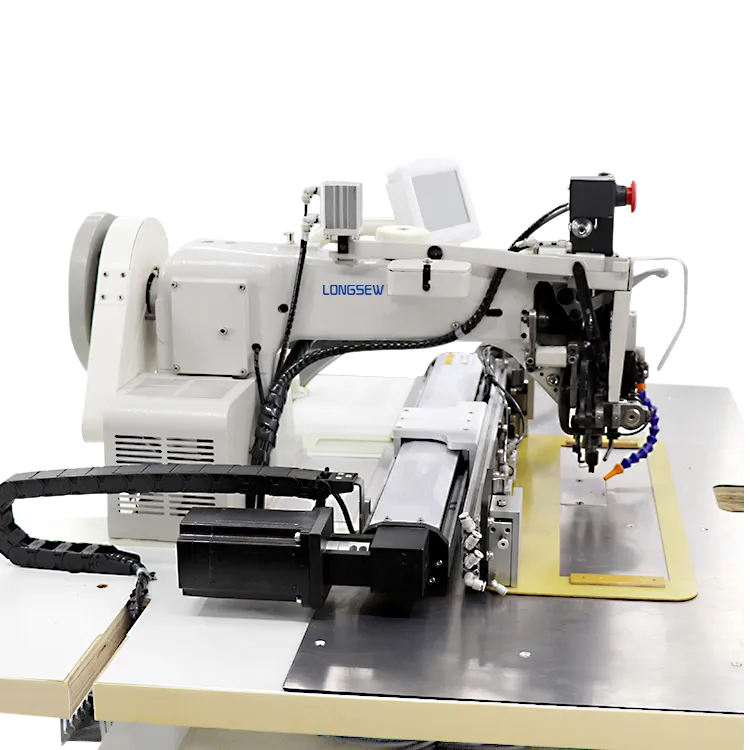lockstitch seam
The Lockstitch Seam An Essential in Textile Craftsmanship
The lockstitch seam is one of the most fundamental and widely used sewing techniques in the textile industry. Its invention revolutionized garment construction, making it easier and more efficient to create durable and aesthetically pleasing clothing. This article will explore the lockstitch seam’s history, construction, applications, and advantages, highlighting why it remains a staple in sewing today.
A Brief History
The lockstitch seam dates back to the 19th century and is closely associated with the development of the sewing machine. Prior to this invention, hand sewing was the predominant method of stitching fabrics together. The introduction of the lockstitch sewing machine by Elias Howe in 1846 marked a turning point in the fashion and textile industries. Although its mechanism was refined over the years, the fundamental principles of the lockstitch remained the same.
Construction of the Lockstitch Seam
A lockstitch is formed using two threads an upper thread and a lower thread. The upper thread is typically fed from a spool on the sewing machine, while the lower thread is sourced from a bobbin located beneath the needle plate. When the needle pierces the fabric, the upper thread creates a loop that interlocks with the lower thread. This interlocking action creates a secure stitch that can withstand tension and movement, making it ideal for garment assembly.
To sew a lockstitch, several steps must be followed 1. Threading the Machine The upper thread must be threaded through various tension discs and guides, while the bobbin is placed correctly in its case. 2. Adjusting Tension Proper tension settings are crucial for achieving an even stitch and preventing issues such as thread bunching or slipping. 3. Sewing Technique As the needle punctures the fabric, the upper thread forms a loop that the bobbin thread catches as it rises, finishing the stitch with a tie that secures both threads.
Applications of the Lockstitch Seam
lockstitch seam

Lockstitch seams are prevalent across a broad spectrum of applications, from high fashion to everyday clothing. They are used in the construction of various types of garments, including shirts, dresses, pants, and outerwear. In addition to garments, lockstitch seams are utilized in home textiles like curtains, cushions, and bed linens.
Furthermore, the versatility of the lockstitch allows for various modifications. For instance, when combined with different techniques, it can create decorative stitches or be used in quilting, where multiple layers of fabric need to be secured together.
Advantages of the Lockstitch Seam
The lockstitch seam offers several advantages that contribute to its ongoing popularity among sewers and manufacturers alike
1. Strength and Durability The interlocking nature of the stitch provides exceptional strength, making it resistant to fraying and unraveling, even under stress. 2. Aesthetic Appeal Lockstitch seams tend to lay flat and create smooth, neat finishes. This is particularly desirable in visible areas of garments where the seam’s appearance matters. 3. Versatility As mentioned, lockstitch seams can be adapted for various sewing projects and techniques, offering a broad range of applications. 4. Ease of Use Lockstitch sewing machines are relatively easy to operate, making them accessible for both beginners and experienced sewers.
Conclusion
The lockstitch seam has stood the test of time, remaining a core element in the world of sewing and garment construction. Its combination of strength, versatility, and aesthetic appeal makes it a go-to choice for sewers of all levels. As the textile industry continues to evolve, the lockstitch will undoubtedly retain its place as an essential technique, demonstrating that sometimes, the simplest solutions yield the most significant results. Whether in a bustling factory or a home sewing room, the lockstitch seam serves as a testament to the artistry and practicality of textile craftsmanship.
-
Zigzag Sewing MachineNewsMay.12,2025
-
Single Needle Sewing MachineNewsMay.12,2025
-
Overlock Sewing Machine PriceNewsMay.12,2025
-
Heavy Duty Industrial Sewing MachineNewsMay.12,2025
-
FIBC Sewing MachineNewsMay.12,2025
-
Cylinder Bed Sewing MachineNewsMay.12,2025
-
Revolutionizing Sewing with CNC TechnologyNewsMar.28,2025





























